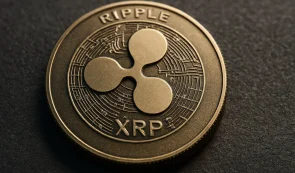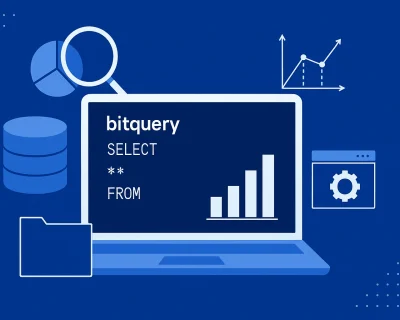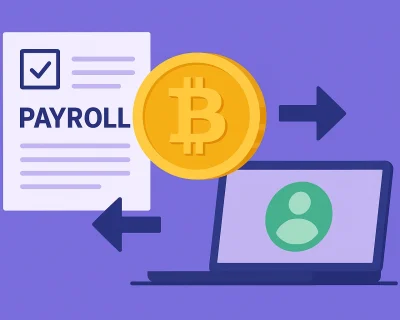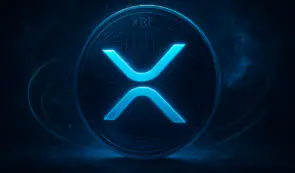How to Use BSC to ETH Bridge Securely: Step-by-Step Guide (UPDATED 2025)
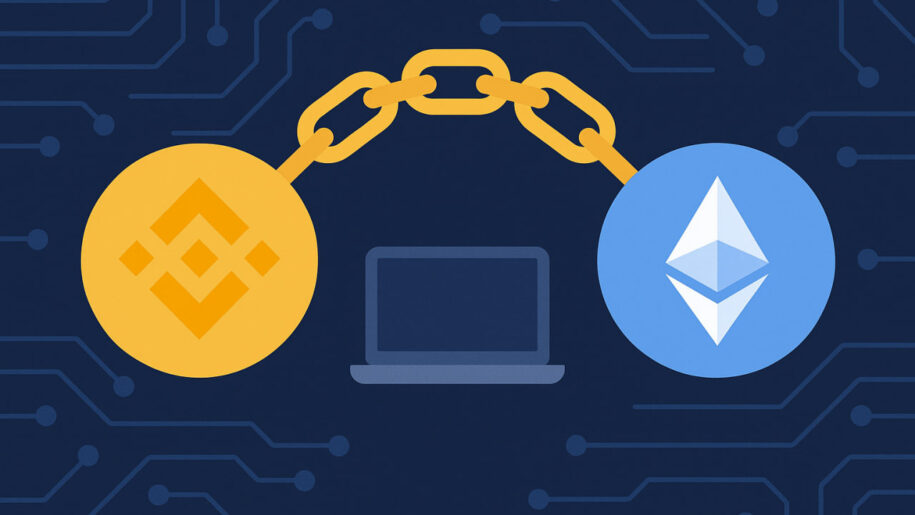
Interoperability is key in the world of blockchain technology. As the blockchain ecosystem expands, seamless cross-chain transactions and asset transfers are becoming increasingly important. One of the essential tools enabling this is a blockchain bridge, a gateway for migrating assets between different networks, such as Binance Smart Chain (BSC) and Ethereum (ETH).
However, ensuring security and efficiency when transferring assets across blockchains is crucial to safeguarding your digital holdings. This guide will provide a step-by-step walkthrough to help you securely transfer assets between BSC and Ethereum, while understanding its technical aspects, benefits, risks, and best practices.
In 2025, blockchain interoperability has evolved rapidly. New standards such as LayerZero, Axelar, and Wormhole have emerged as leading cross-chain protocols, enabling faster and more secure asset movement between networks. Additionally, bridge aggregators like LI.FI now let users access multiple bridges from one interface, reducing the need to manually compare gas fees or transaction times. These developments have made bridging smoother, safer, and cheaper than it was just a few years ago.
Table of contents
Step-by-Step Guide: How to Bridge Between BSC and ETH Securely
Method 1: Using Decentralized Asset Bridge Apps (cBridge or ChainPort)
One of the most popular and convenient methods to bridge Binance Smart Chain (BSC) with Ethereum (ETH) is using decentralized asset bridge apps offered by companies like cBridge or ChainPort. Our analysis shows these options appear to be the most suitable for bridging the Binance Chain to the Ethereum Mainnet network.
Now, let’s walk through the process step by step. We’ll demonstrate using cBridge as an example, but please note that the procedure is similar for ChainPort.
Before we begin, it’s crucial to emphasize that transferring assets from the Binance Smart Chain to another blockchain requires preciseness. If done incorrectly, there’s a risk of losing your assets permanently. Therefore, exercise extreme caution and carefully follow the steps below:
Step 1. Switch Blockchain by Changing Your Wallet Settings to the Binance Smart Chain (BNB Smart Chain)
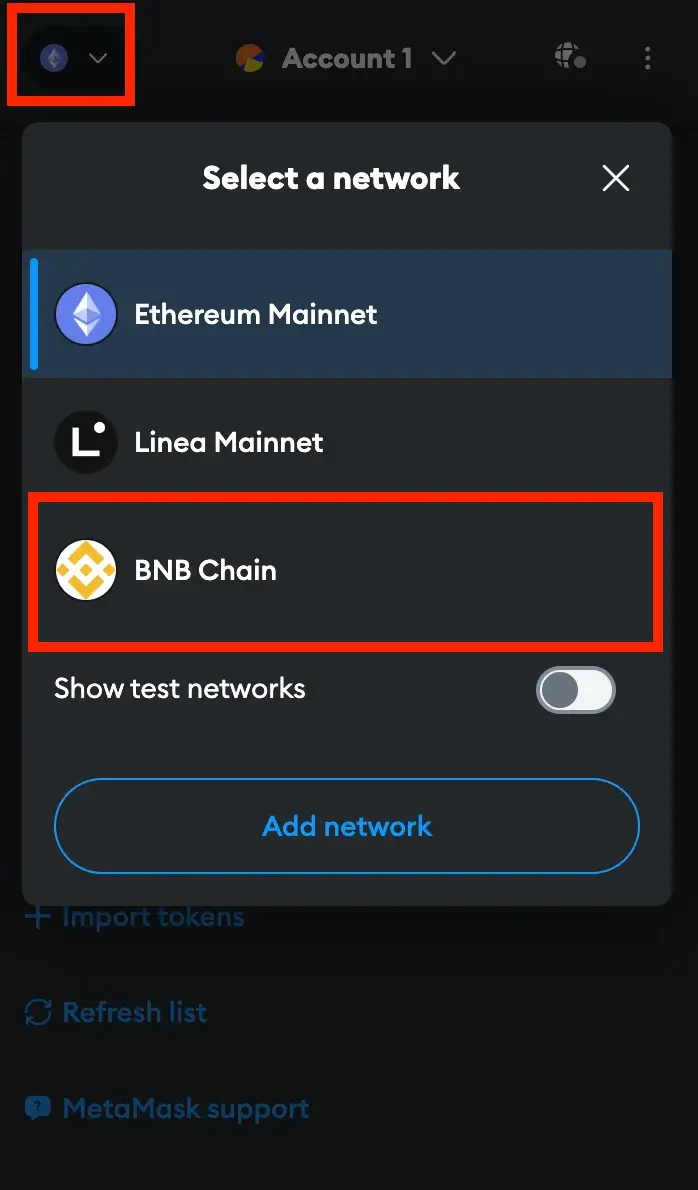
To prepare to transfer or bridge assets from Binance Smart Chain (BSC) to Ethereum, you should first ensure that your wallet’s default network is set to Binance Smart Chain. This network switch is essential to enable the transaction. Here’s how to make the change if you’re using MetaMask:
Start by opening the MetaMask extension and unlocking your wallet. Once you’ve done that, locate the network selector box within the main MetaMask window. It’s a dropdown menu that allows you to choose your network. From the available networks in your wallet, select “BNB Chain.”
However, if you don’t find “Binance Smart Chain” in the list of available networks, don’t worry. You can manually add it to MetaMask by clicking on the “Add network” button. Then, specify “Binance Smart Chain” as your desired network. This adjustment ensures that your wallet is properly configured for the subsequent steps in the bridging process.
Step 2. Go to the Bridge Website and Connect Your Wallet to It

Once you’ve switched your MetaMask wallet to the Binance Smart Chain network, you can connect it to the cBridge website with these straightforward steps. Open your web browser and visit the cBridge website (or ChainPort, depending on your choice).
Look for the “Connect Wallet” option in the website’s upper right corner and simply click it. A dialog box will then appear, presenting you with compatible wallets. In this list, choose “MetaMask.”
If, however, you are using a different cryptocurrency wallet, identify your wallet in the list of wallets compatible with the Celer Bridge platform and then proceed to approve the connection similarly.
Step 3. Choose the Origin and Destination Blockchains
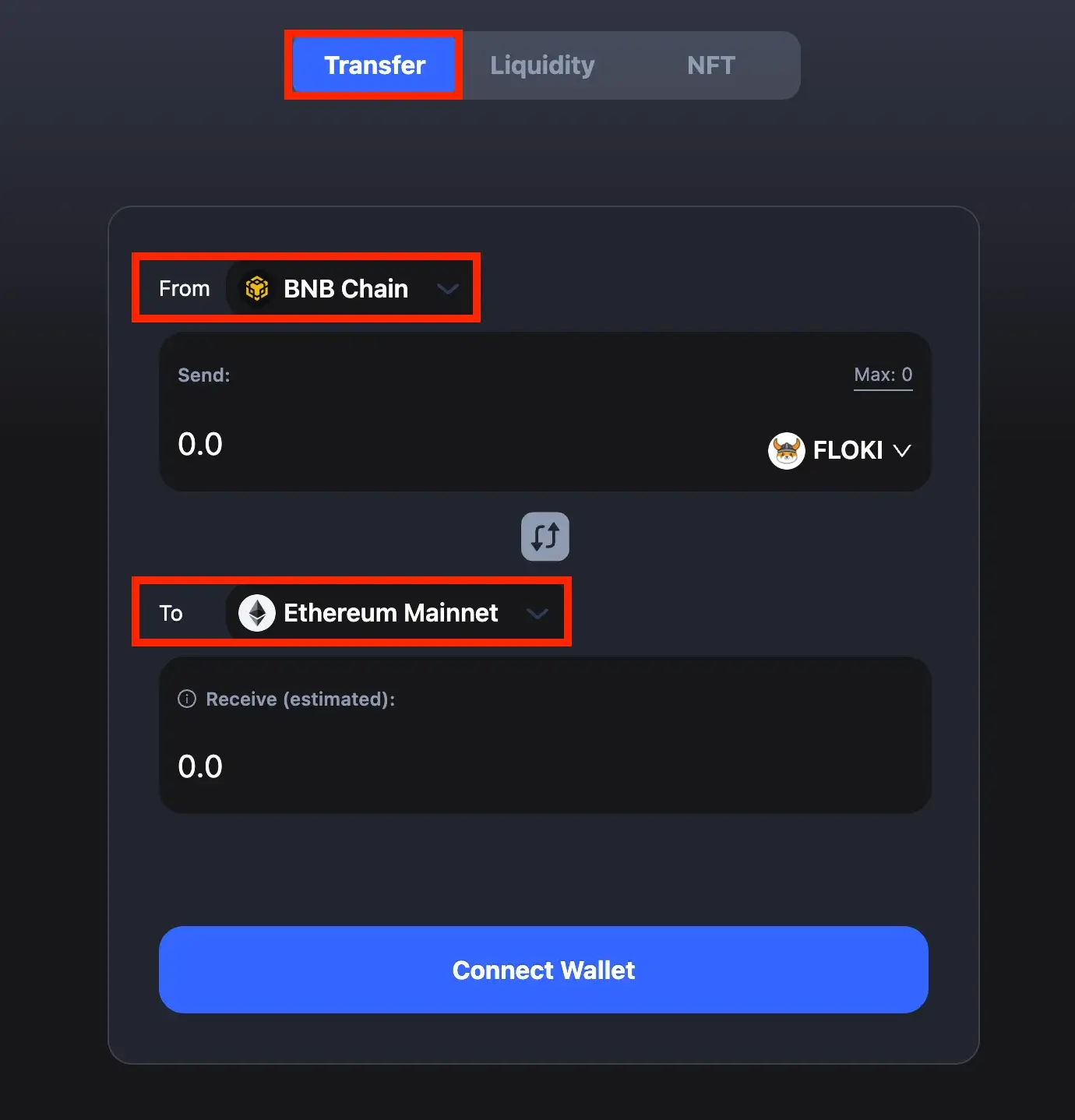
In the “From” section, choose “BNB Chain” as your origin chain, and in the “To” section, opt for “Ethereum Mainnet” as your destination chain.
Step 4. Pick the Token You Want to Move, Specify How Much, and Click the “Transfer” Button
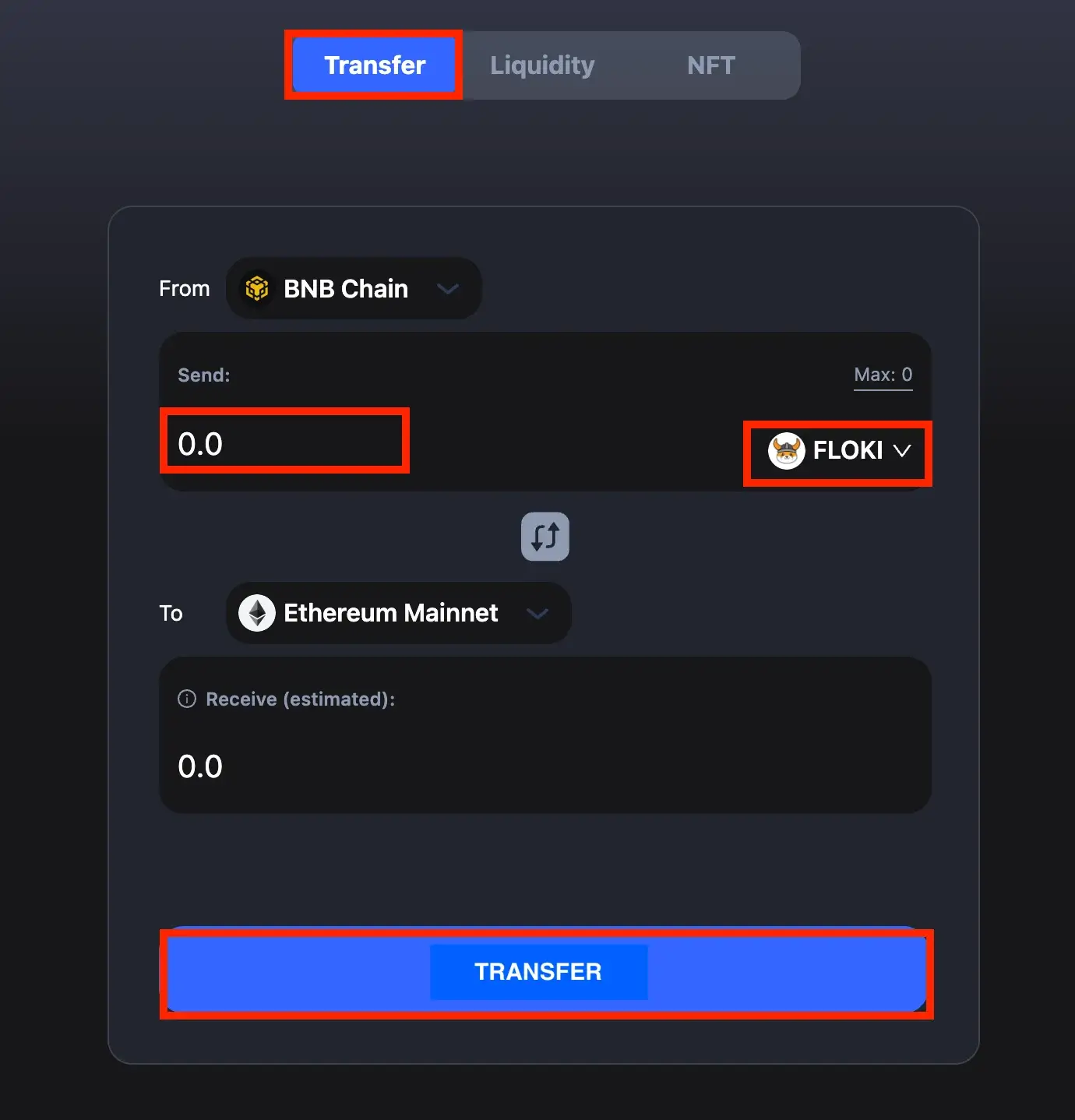
Select the token you wish to transfer (in our exemplification, we used FLOKI), specify the quantity of that chosen token for the transfer, and initiate the bridging process by clicking the “Transfer” button.
Step 5. Confirm Your Transaction

Now, you should encounter a pop-up requesting your approval for token spending. First, on the cBridge dialog, click the “Approve” button. After that, a similar dialog will appear in MetaMask; here, click “Confirm” to grant cBridge the authorization to spend tokens from your wallet.
Once you’ve approved the token spending on MetaMask, cBridge will prompt you to confirm the transaction. Carefully review the transaction details and, on the cBridge interface, click “Confirm Transfer.”
Review the transaction details in the pop-up MetaMask window, including the amount and associated transaction fees. Click “Confirm” to give your wallet the green light to complete the transaction.
After your wallet approves the transaction, return to cBridge and patiently wait for the transaction to finalize. Once it’s complete, launch MetaMask and switch your network back to Ethereum Mainnet. This step will allow you to check if the funds you bridged are now successfully available in your wallet.
Method 2: Bridging via Coinbase Wallet
Coinbase Wallet now allows its users to seamlessly bridge cryptocurrency directly from their browser extension or mobile app. To make this process easy, follow these simple steps:
Step 1. Access the Bridge Icon
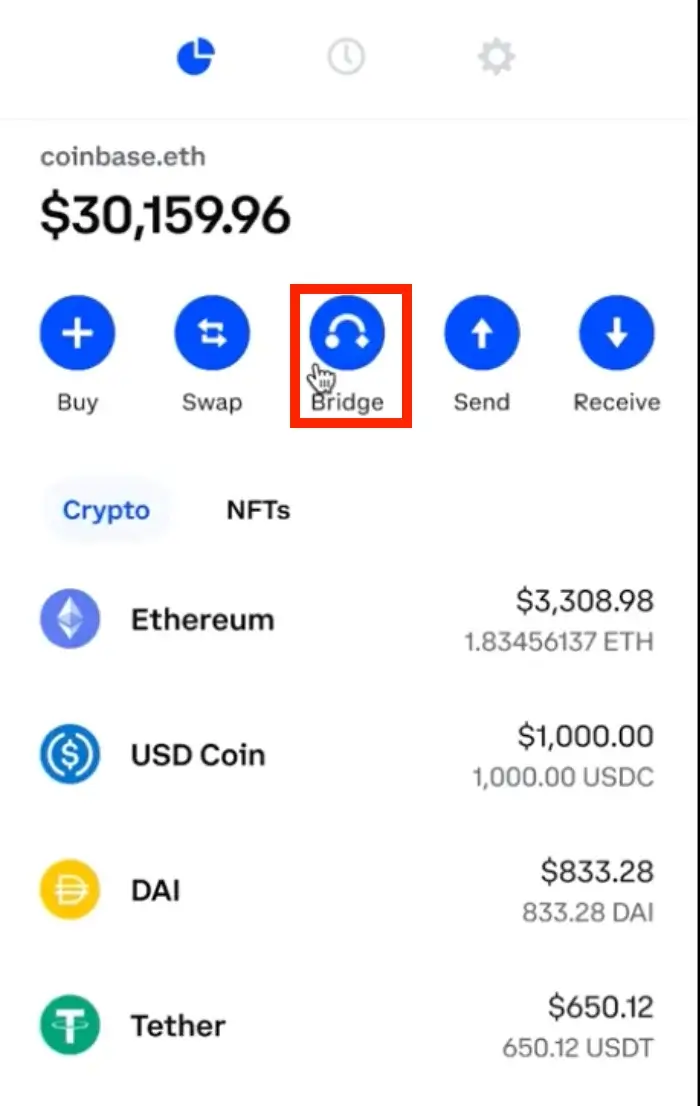
When you’re logged into your wallet, look for the “Bridge” button at the top-center of your wallet homepage. Click on it to begin the process.
Step 2. Choose Your Networks and Amount
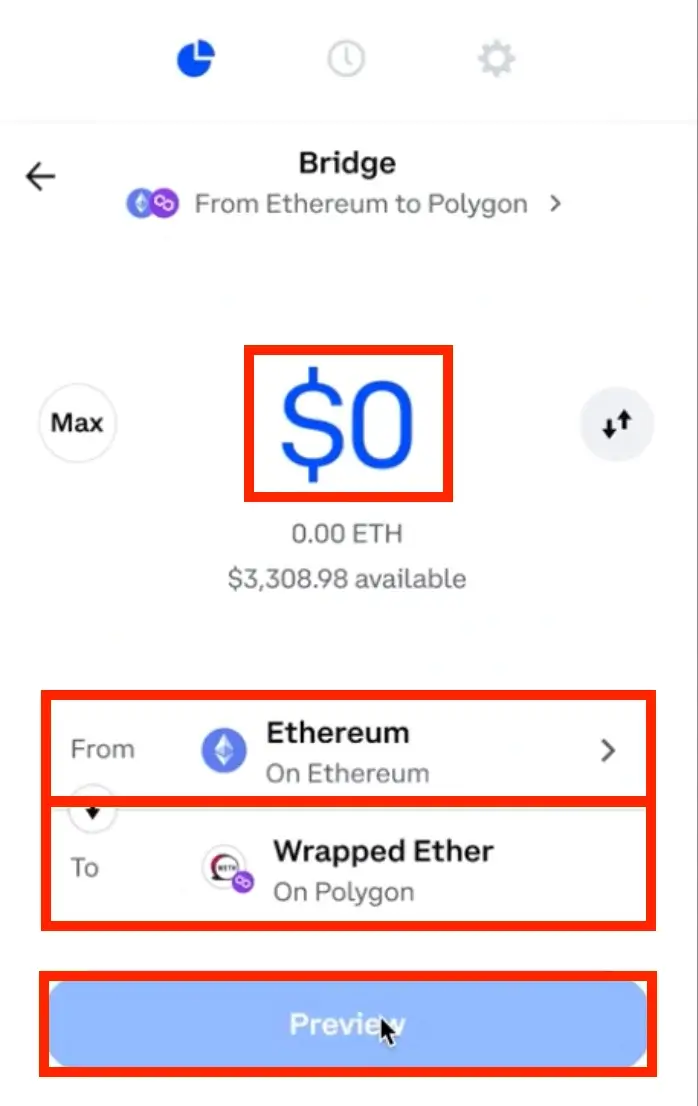
After clicking the “Bridge” button, you’ll be directed to a page where you can pick the networks you want to use. To bridge Binance Smart Chain (BSC) to Ethereum (ETH), choose Binance Smart Chain network from the crypto assets dropdown menu next to “From,” and then select Ethereum (ETH) from the “To” section. Ensure you’ve chosen the proper blockchains. Next, enter the amount of BNB you wish to transfer to the Ethereum mainnet network. Click “Preview” when you’re ready.
Step 3. Review and Confirm
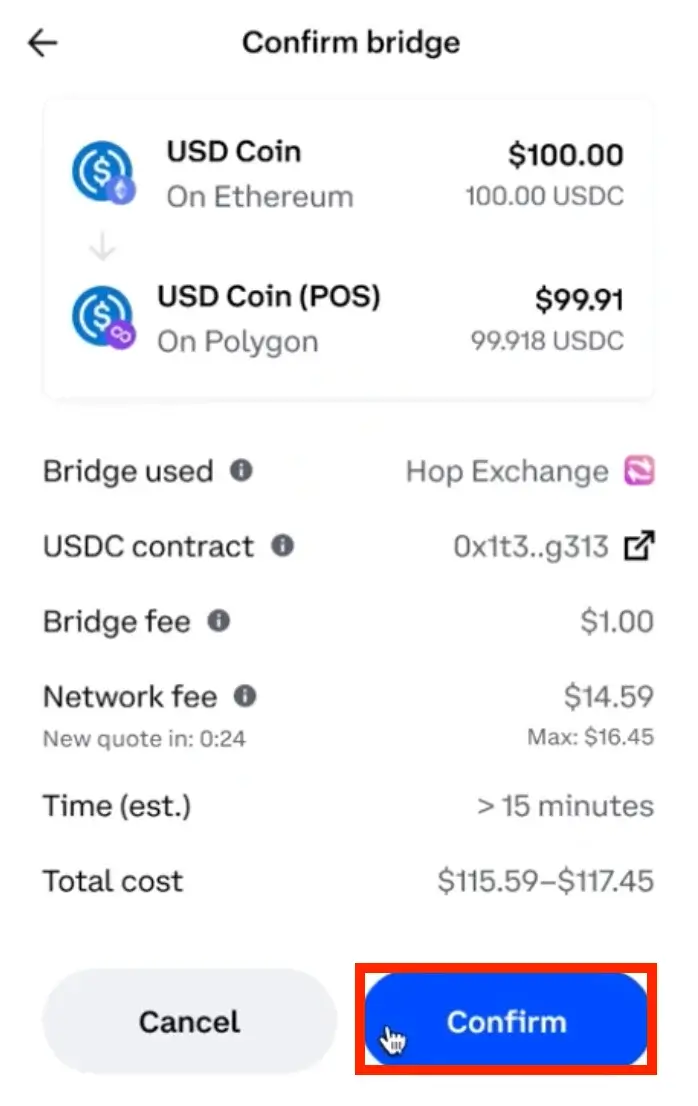
The final step is to review the entered data, including the associated fees and the estimated completion time for the transaction. Remember that you’ll need to pay a gas fee or network fee for the blockchain transaction. If everything looks accurate, click “Confirm” to proceed with the transaction.
Method 3: Bridging via Binance Exchange
The final method we’re introducing, which you can use to move assets from the Binance Smart Chain (BSC) to Ethereum, involves utilizing the Binance exchange directly. To bridge tokens from BSC to Ethereum using the Binance exchange, here’s a step-by-step guide:
Step 1. Initiate the Deposit on Binance Exchange

Begin by logging into your Binance account via the Binance website or the Binance mobile app for Android or iOS. Then, click on the “Deposit” button, typically found in the upper-right corner of the main page. As a deposit method, choose “Deposit Crypto.”
Step 2. Select the Token and Network
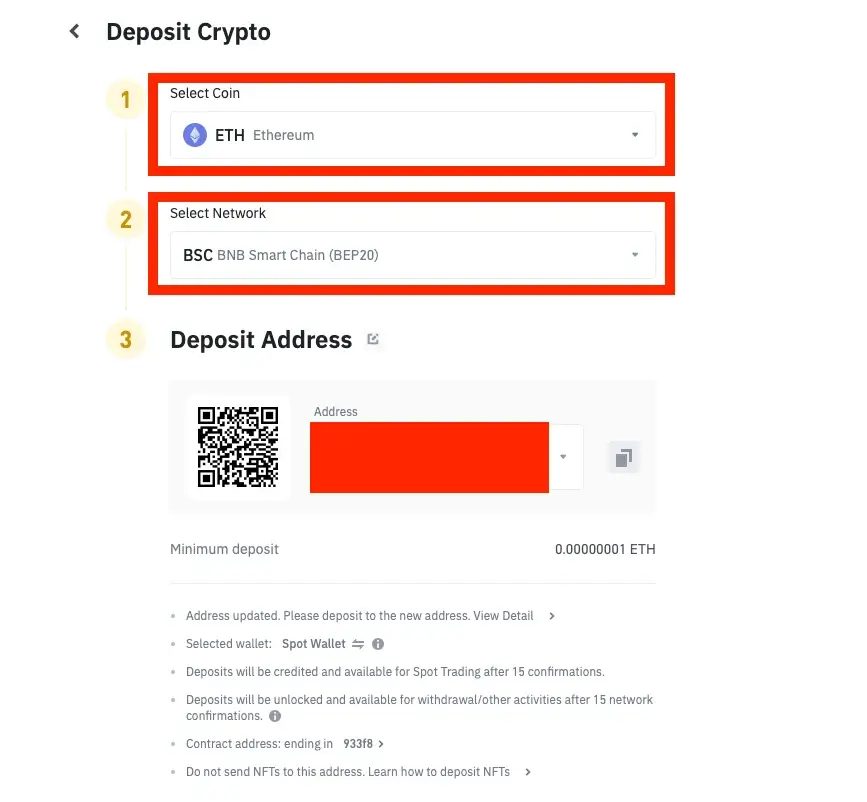
Next, you’ll be prompted to choose the specific coin or token you want to deposit. To bridge ETH from BSC to Ethereum, select “ETH” as the token and opt for the BNB Smart Chain (BEP20) as the deposit network. Don’t forget to copy the BEP20 wallet address provided by Binance.
Step 3. Transfer ETH to Binance Exchange
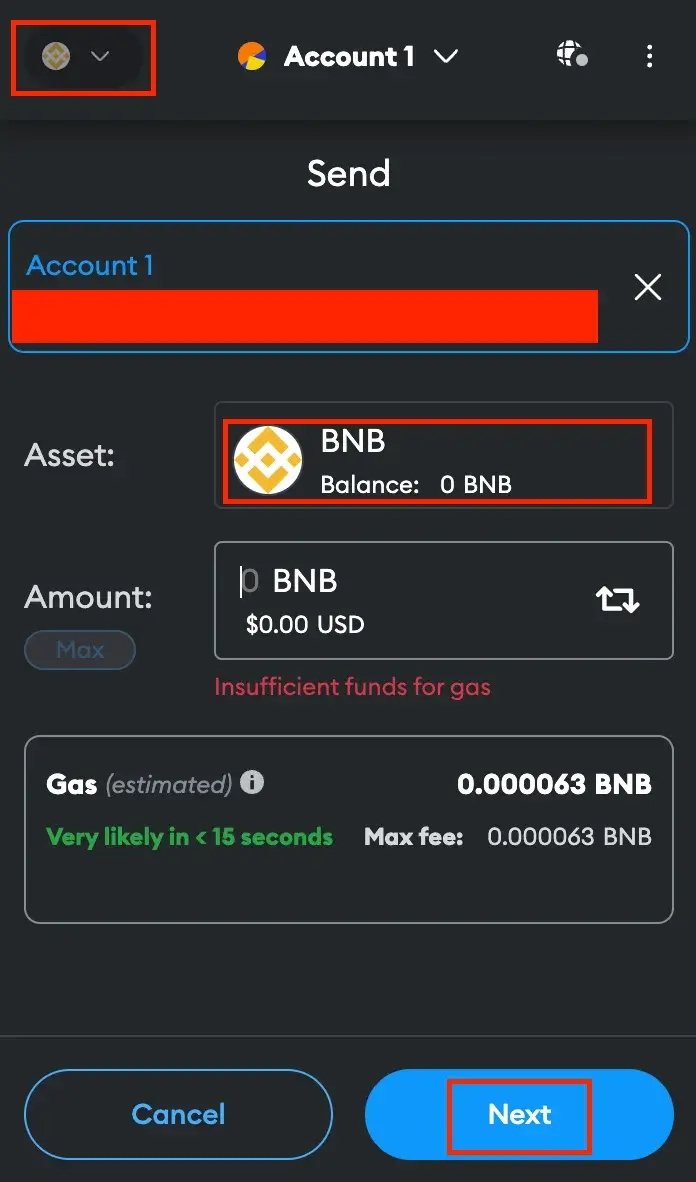
Make sure your MetaMask wallet is connected to the Binance Smart Chain. Then, access your ETH balance and select “Send.” Paste the BEP20-ETH wallet address from Binance, specify the amount of ETH you want to transfer, and proceed by clicking “Next.” Review the transaction details, and when everything appears correct, hit “Confirm” to authorize the transfer.
Step 4. Withdraw to MetaMask on Ethereum
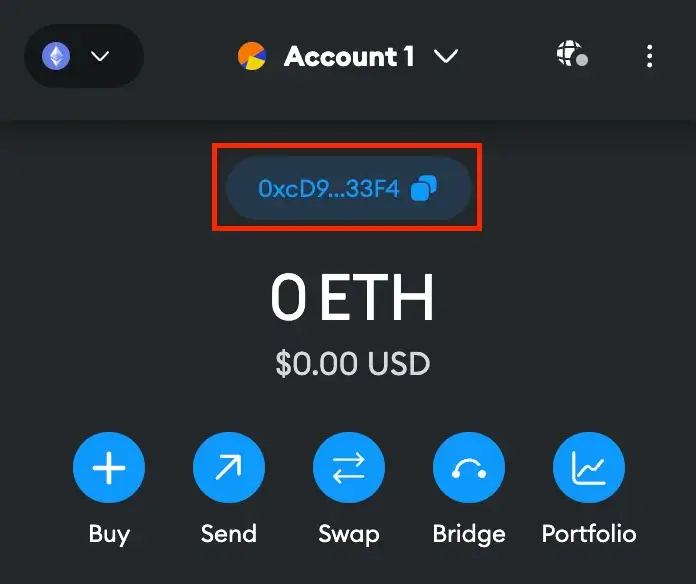
After moving your crypto from MetaMask to Binance, the next step is to withdraw the tokens back to your wallet. However, this time, you’ll use the Ethereum network. Begin by copying your Ethereum (ETH) wallet address from MetaMask.
In Binance, navigate to your Fiat and Spot wallet and select “Withdraw.” Choose ETH as the coin for the transfer. Paste the wallet address you copied from MetaMask and pick “Ethereum (ERC20)” as the network for the transaction.
Enter the amount of ETH you wish to transfer to your MetaMask wallet and click “Withdraw.” You’ll then complete a two-step verification process and conclude by clicking “Submit” to approve the transaction.
New Alternative (2025): Using Bridge Aggregators Like LI.FI or Socket
In 2025, bridge aggregators have become one of the most convenient ways to move assets across multiple chains. Platforms like LI.FI, Socket, and Rhino.fi automatically find the fastest and cheapest route for your transaction by scanning several bridges at once.
Simply connect your wallet, choose your source and destination networks, and the aggregator handles the rest—no need to manually compare bridges or gas fees. This method is especially helpful for users frequently moving between newer chains like Base, zkSync, or Blast.
What is a Crypto or Blockchain Bridge?
A crypto bridge functions like a digital connector, allowing users to move assets between different blockchains. It enables cross-chain transfers, helping users shift tokens between Ethereum (ETH) and Binance Smart Chain (BSC) without the need to purchase additional tokens.
For example, if you hold USDT on the BSC network but need it on Ethereum, you can use a BSC to ETH bridge instead of repurchasing USDT on the Ethereum Mainnet.
Beyond transferring tokens, newer bridges now support cross-chain messaging, allowing smart contracts on different networks to communicate. This functionality enables unified liquidity, meaning a decentralized application on one chain can tap into liquidity pools on another – expanding DeFi accessibility without manual bridging.
Blockchain Bridges Technical Approaches
There are different technical approaches to cross-chain transfers, with liquidity-based and canonical-based bridging being two common methods.
Liquidity-based bridging involves having liquidity pools of an asset on both the source and destination blockchains.
Canonical-based bridging locks an asset on the source chain and creates a new representation of that asset on the destination chain.
Top Cross-Chain Bridges in 2025
-
LayerZero: Popular for its “ultra-light node” design and wide network support.
-
Axelar: Known for its decentralized validator network and strong security model.
-
Wormhole: A multi-chain messaging protocol used by Solana, Ethereum, and Base ecosystems.
-
LI.FI: A bridge aggregator that connects dozens of protocols in one interface.
-
cBridge: Still a top option for low-cost, fast BSC-to-ETH transfers.
Handling Non-Fungible Tokens (NFTs) with Crypto Bridges
Moreover, crypto bridges aren’t limited to fungible tokens alone. They can also handle non-fungible tokens (NFTs). How’s that? Well, there are two primary models for NFT bridging: pegged NFT bridging and multi-chain native (MCN) NFT bridging.
Pegged NFT bridging mirrors canonical-based bridging, where the NFT is locked on the source chain, and a new NFT representing the locked one is minted on the destination chain.
MCN NFT bridging does not have a concept of an “origin chain” for NFTs. Instead, a “Burn-and-Mint” process ensures that there is always only one NFT across all connected chains.
Trust Levels in Crypto Bridges
Finally, crypto bridges come in different “trust” levels. There are trusted bridges that rely on a central system or entity, requiring users to place their trust in them.
On the other hand, trustless bridges operate solely through automated smart contracts and algorithms.
Types of Blockchain Bridges
Different blockchain bridges serve distinct purposes. Below are the key types:
- Cross-Chain Bridges: Facilitate asset transfers between two separate blockchain networks (e.g., BSC to ETH bridge).
- Sidechain Bridges: Connect a primary blockchain with a sidechain for faster transactions.
- Federated Bridges: Operated by a trusted group that validates asset transfers.
- Hashed Timelock Contracts (HTLCs): Enable secure asset transfers without requiring trust between parties.
- Programmable Token Bridges: Allow smart contract-based transfers, including staking, swapping, and lending.
- Trust-Minimized Bridges: Prioritize security over flexibility, making them ideal for sensitive transactions.
Benefits of Using a BSC to ETH Bridge
Using a bridge BSC to ETH provides the following advantages:
- Improved Scalability & Performance – Reduces network congestion and enhances transaction speed.
- Security & Trust – Utilizes cryptographic techniques for safer transactions.
- Seamless Asset Transfers – Enables frictionless movement of tokens across chains.
- Lower Costs & Faster Transactions – Minimizes fees by eliminating intermediaries.
Risks & Security Concerns with Blockchain Bridges
While blockchain bridges enable interoperability, they also introduce security risks. Some common concerns include:
- Smart Contract Vulnerabilities – Bugs in smart contracts have led to significant exploits.
- Centralization Risks – Some bridges rely on centralized authorities, increasing counterparty risk.
- Liquidity Risks – Low liquidity bridges may result in delays or high slippage fees.
- Phishing & Scams – Malicious websites and fake bridge services pose risks to users.
How to Stay Safe While Using a Bridge Between BSC and ETH
- Verify URLs – Use official bridge platforms.
- Check Smart Contracts – Review audit reports and community feedback.
- Use Reputable Bridges – Platforms like cBridge, ChainPort, and Binance have strong security records.
- Avoid Large Transfers Initially – Test with small amounts before moving significant assets.
FAQ: Common Questions About Blockchain Bridges
Why Do People Bridge from BSC to ETH?
Bridging from Binance Smart Chain (BSC) to Ethereum allows access to Ethereum’s DeFi ecosystem, liquidity pools, NFTs, and smart contracts.
What is the Best Cross-Chain Bridge for BSC and Ethereum?
Our research shows cBridge and ChainPort are the most secure and efficient options.
Is Bridging Crypto Safe?
While blockchain bridges are essential, some have suffered security breaches. Only transfer assets you can afford to lose and use trusted platforms.
Final Thoughts
Blockchain bridges are an essential tool for cross-chain interoperability. Whether using cBridge, Coinbase Wallet, or Binance, ensure you follow the best security practices to safeguard your assets.
As blockchain networks continue to expand, bridges will evolve beyond token transfers toward full interoperability, enabling seamless movement of not only assets but also data and identity across chains. In the near future, cross-chain activity will likely feel as natural as using a single blockchain today.
Always double-check transaction details, confirm network settings, and use trusted platforms.



